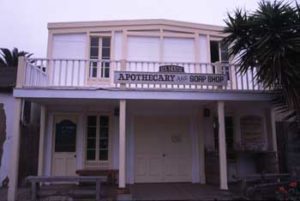 California State Public Resources Code (PRC) 5024 requires that all state agencies preserve and maintain state-owned historical resources. Section 5024.5 outlines the process of meeting this mandate. The process gives the State Historic Preservation Officer (SHPO) the authority to review the efforts made by state agencies toward compliance with this law. State agencies must work with the SHPO to show that they are protecting and maintaining the historical resources (the term includes significant prehistoric, historic, ethnographic, and traditional cultural resources) on their Master List and that no development or maintenance projects will adversely impact those resources.
California State Public Resources Code (PRC) 5024 requires that all state agencies preserve and maintain state-owned historical resources. Section 5024.5 outlines the process of meeting this mandate. The process gives the State Historic Preservation Officer (SHPO) the authority to review the efforts made by state agencies toward compliance with this law. State agencies must work with the SHPO to show that they are protecting and maintaining the historical resources (the term includes significant prehistoric, historic, ethnographic, and traditional cultural resources) on their Master List and that no development or maintenance projects will adversely impact those resources.
If the state agency holds title to land, or provides funding for acquisition, restoration, or development, PRC 5024 applies. Compliance with PRC 5024 should be included in the agency’s land acquisition, granting, and project development processes. For example, if the state agency acquires or provides acquisition funding for land, any historic buildings, features, or structures should be evaluated through a PRC 5024 review to see if they should be placed on the Master List. If the resource is, or will be, placed on the Master List, the agency must consult with SHPO about mitigation prior to demolition or alteration of the resource. Additionally, before any habitat restoration project funded by a state agency is undertaken, cultural resources studies need to be completed to evaluate the potential for adverse impacts to resources eligible for, or on, the Master List.
Spindrift staff are experienced with PRC 5024 compliance and stand ready to assist state agencies with technical studies, evaluations, and SHPO consultation. For questions and assistance, please contact: Arleen Garcia-Herbst at arleen@spindriftarchaeology or 858-333-7202.
Photo: Charless Noell brought the prefabricated U. S. House to San Diego in 1850. The house was purchased in San Francisco. Another story states that U. S., House began as a Sears kit. U. S. House began as a store, then later became a bar, restaurant, and boarding house. Credit: Kenneth A. Larson @ http://www.placesearth.com/

